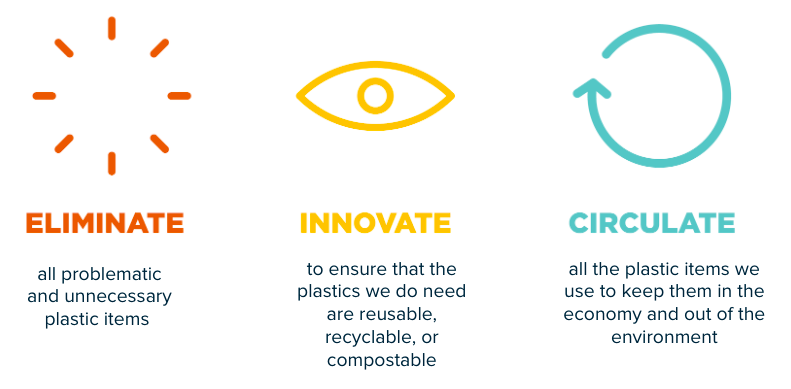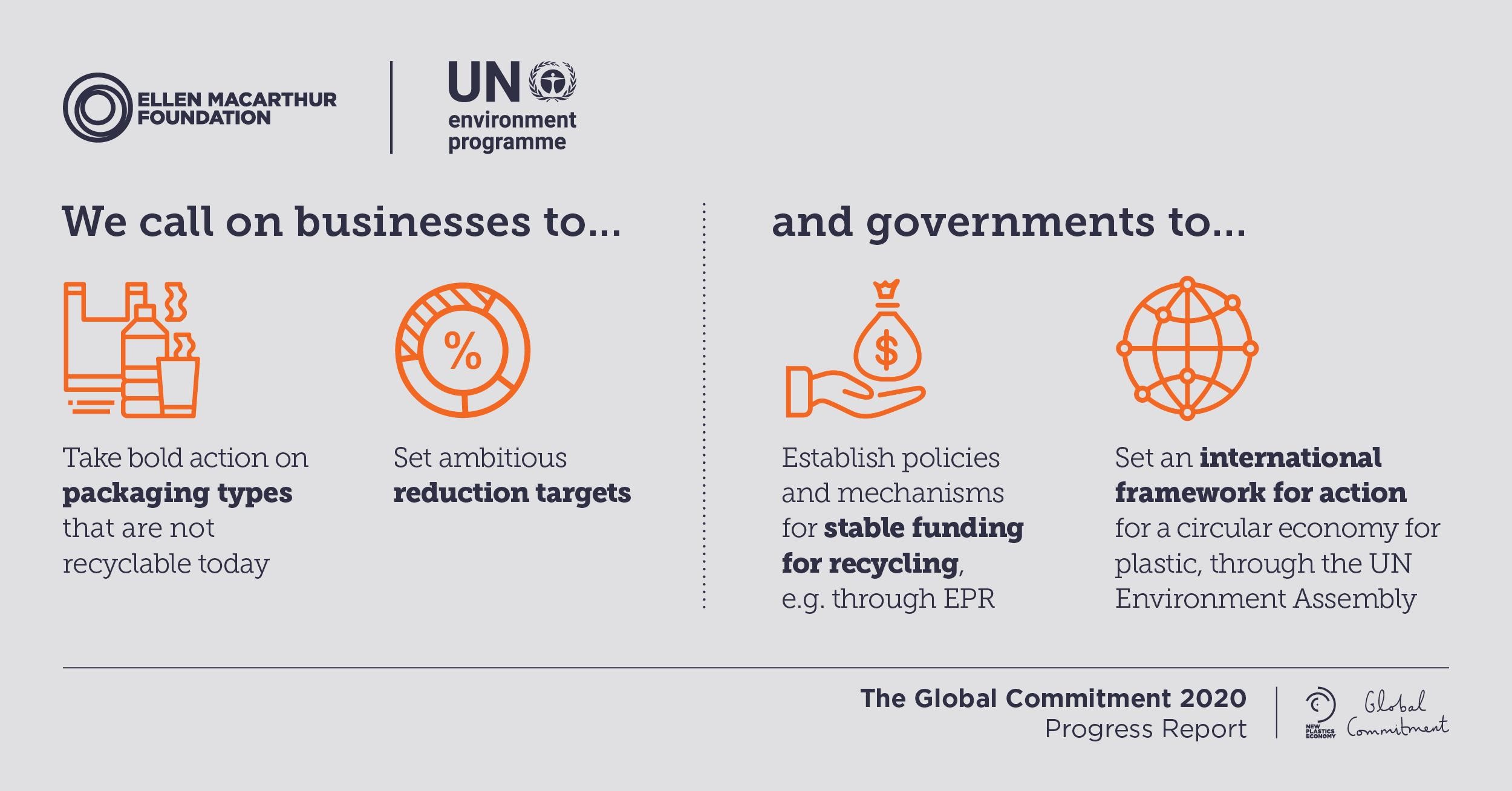Since 2018, more than 1,000 organisations have united behind a common vision and targets for a circular economy for plastic. In just a few years, the circular economy has been put on the agenda of leading businesses and governments across the world and has been recognised as the solution to the plastic waste crisis.
The word crisis is not used lightly. If we carry on with business as usual, by 2040 there will be three times the amount of plastic entering the ocean each year, putting us well on the way to an ocean with more plastic than fish by 2050.
Linear Versus Circular
This is the result of the extractive economic model that has been in place since the industrial revolution — the linear economy. There is perhaps no industry where the harmful effects of the linear economy are so evident as in the plastics industry. Finite resources are taken from the ground, products and packaging are made from them, and, eventually, they are thrown away as waste, causing devastation to the natural environment in the process.
By contrast, a circular economy eliminates waste and pollution, keeps products and materials in use, and regenerates natural systems, all by design.
Designing for the Circular Economy
Design is the keyword. Plastic waste is a result of the way we design packaging, products, and business models. It is no secret that certain packaging types can not or will not ever be recycled and therefore end up in landfill or incinerators — and often the environment — yet still they are put on the market . If the root cause of the problem is found in the design stage, so too should the solution. Yes, it is important to get collection and waste management right, but we can not solve this problem with downstream solutions alone. We need to move our attention upstream, to the design stage.
In this context, the Golden Design Rules of The Consumer Goods Forum’s Plastic Waste Coalition of Action (PWCoA) are a good start. However, it is crucial to look beyond packaging design and also look at rethinking products and business models. In order to assist companies with this, the Ellen MacArthur Foundation recently published Upstream Innovation: A Guide To Packaging Solutions, containing practical guidance and real-world examples. There is an interactive searchable database of all of the innovations profiled in the guide and workshop asset packs to apply this thinking to your specific product portfolio, all freely available online.
Growing Momentum
As the guide shows, many FMCG brands are already benefiting from the opportunities of upstream innovation. Many have also joined those 1,000+ organisations that have united behind the New Plastics Economy common vision — to eliminate the plastic items we don’t need; innovate so all plastics we do need are designed to be safely reused, recycled, or composted; and circulate everything we use to keep it in the economy and out of the environment.
Through the Global Commitment, led in collaboration with UNEP, businesses and governments have agreed to concrete 2025 targets under this vision and, through the Plastics Pact network, countries and regions have set up their own initiatives that bring together all key stakeholders to implement solutions towards a circular economy for plastics.
Limited Progress
Momentum is building, but still there is far more that must be done to tackle this problem. Signatories to the Global Commitment have made progress but a substantial acceleration of that progress will be needed to achieve the 2025 targets. Advances have mainly been made in two key areas: the incorporation of recycled content in plastic packaging, and the phasing out of the most commonly identified problematic categories of plastic packaging.
However, there has been limited progress on increasing the recyclability of plastic packaging and on reducing the need for single-use packaging altogether. Progress on shifting towards reusable packaging is limited, and elimination efforts remain focused on a relatively small set of materials and formats.
Looking Forward
The Ellen MacArthur Foundation, therefore, calls on businesses to, firstly, take bold action on packaging types that are not recyclable today, such as small format flexible plastic packaging, and, secondly, set ambitious reduction targets, rapidly scaling innovative new delivery models that design out single-use packaging.
The Foundation also calls on governments around the world to, firstly, establish policies that provide dedicated, ongoing, and sufficient funding for collection and sorting, through fair industry contributions, such as extended producer responsibility (EPR). And, secondly, to develop a global treaty on plastic pollution. A global agreement setting out goals and binding targets, together with national action plans and consistent measurement, is needed to: harmonise policy efforts; enhance investment planning; stimulate innovation; and coordinate infrastructure development. Companies can join a growing group of 45 leading businesses in their call for a treaty at www.plasticpollutiontreaty.org.
In the wake of Covid-19, the circular economy presents opportunities to address global challenges, including plastic pollution, climate change, and biodiversity loss, while helping to create jobs and benefit society. Far from pushing the circular economy off the agenda, the pandemic has highlighted the urgency for a new system. It is time to step up, not step back.
This blog was written and contributed by:
Sander Defruyt
Lead of the New Plastics Economy Initiative
Ellen MacArthur Foundation



